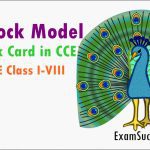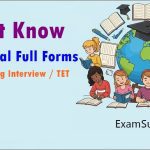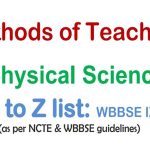Boost your exam prep with our Solid State Chemistry Mock Test. Practice 50+ questions on crystal structures, defects, band theory, and magnetism. Get detailed solutions, topic-wise feedback, and real exam-style practice. Ideal for GATE, NET, JEST, and university exams, this test improves speed, accuracy, and confidence. Start practicing online or download now!
Designed for undergraduate and postgraduate chemistry students, competitive exam aspirants (GATE, NET, JEST) and anyone preparing for course assessments, the Solid State Chemistry Mock Test is a focused, high-quality practice experience built to sharpen your conceptual understanding and exam skills. This mock test simulates real exam conditions while giving detailed feedback so you can quickly identify weak spots, consolidate strengths, and build the confidence to ace your next assessment.
What this mock test covers
The test concentrates on the essential topics of solid state chemistry commonly examined in university exams and competitive tests:
- Crystal structures and lattices (Bravais lattices, unit cells, coordination numbers)
- X-ray diffraction and Bragg’s law, reciprocal lattice concepts
- Defects in solids (point, line, surface defects; Frenkel and Schottky defects)
- Band theory, electrical & thermal conductivity, semiconductors
- Ionic, covalent, metallic bonding in solids and Madelung constants
- Magnetic properties, types of magnetism, Curie-Weiss law
- Phase diagrams and polymorphism, solid-state reactions and diffusion
- Nanomaterials and structure-property relationships (basic introductory questions)
Test format & difficulty
The mock test mimics a typical exam-style paper and is suitable for timed practice:
- Duration: 10 minutes (recommended, but you can set your own pace)
- Number of questions: 10 (a balanced mix of multiple-choice questions, conceptual short-answer items, and problem-solving questions)
- Difficulty levels: Questions vary from easy concept checks to medium application problems and a selection of tougher, analytical questions to stretch top-performers
- Scoring scheme: Correct answer +1, incorrect –0.25 (penalty only for MCQs), and full credit for worked short answers based on stepwise correctness
Why this mock test helps
Practicing with exam-like papers is the fastest way to close the gap between knowledge and performance. This mock test gives you:
- Targeted practice: Every question maps to a specific concept, so your practice is efficient — no wasted time on irrelevant material.
- Exam timing experience: Timed sections teach you how to allocate time between quick conceptual MCQs and longer calculation problems.
- Error analysis: A post-test breakdown shows where you lost marks — by topic, question type, and difficulty level — enabling laser-focused revision.
- Step-by-step solutions: Each non-MCQ includes a worked solution that explains the reasoning and calculations, not just the final answer.
- Conceptual notes & formula cheat-sheet: Quick reference material highlights critical equations and tricks frequently used in solutions.
Who will benefit most
- Undergraduate students preparing for midterms and finals who need efficient revision and practice.
- Postgraduate students preparing for entrance exams and qualifying tests.
- Candidates preparing for national-level competitive exams (GATE, NET, JEST) who want to strengthen their solid state section.
- Self-learners and competitive problem solvers who want to test and measure their progress.
How results are presented
After completing the mock test you receive:
- Overall score and percentile — so you know how you rank against peers taking the same test.
- Topic-wise performance — a clear visual (bar chart) showing strengths and weak areas.
- Question-wise feedback — wrong answers show the correct option and a concise explanation of the mistake.
- Time-on-question report — identifies questions that took too long and may indicate inefficient solving strategies.
- Personalized revision plan — automated suggestions for which topics to review and recommended resources to fix gaps.
Study strategy recommendations (included)
To maximize benefit from the mock test, we include a short study guide:
- Attempt the test under timed conditions at least once to gauge baseline performance.
- Review complete solutions immediately after the first attempt, then reattempt only the incorrect or uncertain questions.
- Use the topic-wise report to create a focused plan: practice 2–3 concept checks per weak topic and 1 problem-solving exercise for each.
- Repeat the mock after two weeks to measure progress and adjust study targets.
Technical & accessibility features
- Mobile- and desktop-friendly — the test adapts to any screen so you can practice on a laptop, tablet, or phone.
- Printable option — want pen-and-paper practice? Download a printer-friendly PDF.
- Accessibility-ready — clear fo








